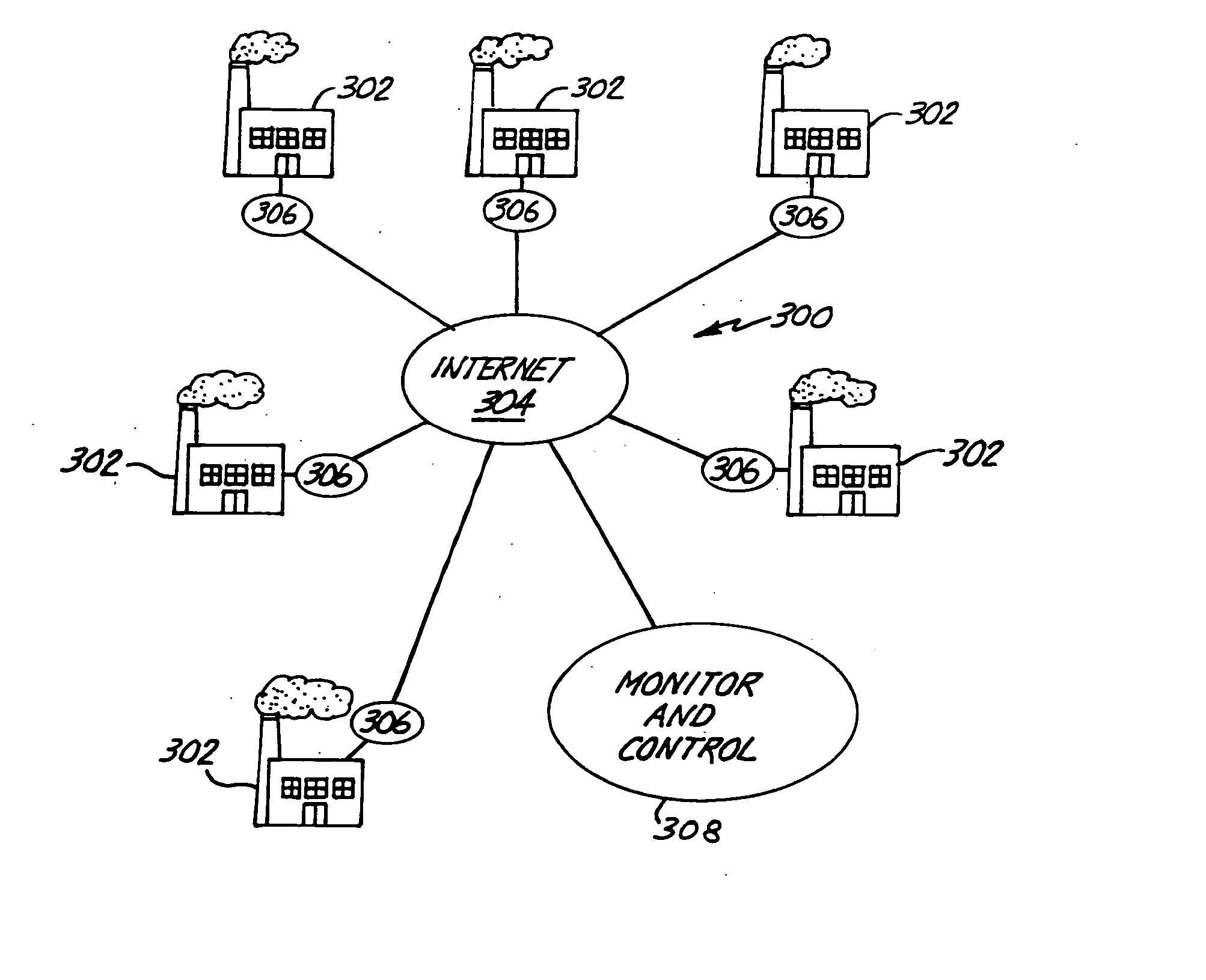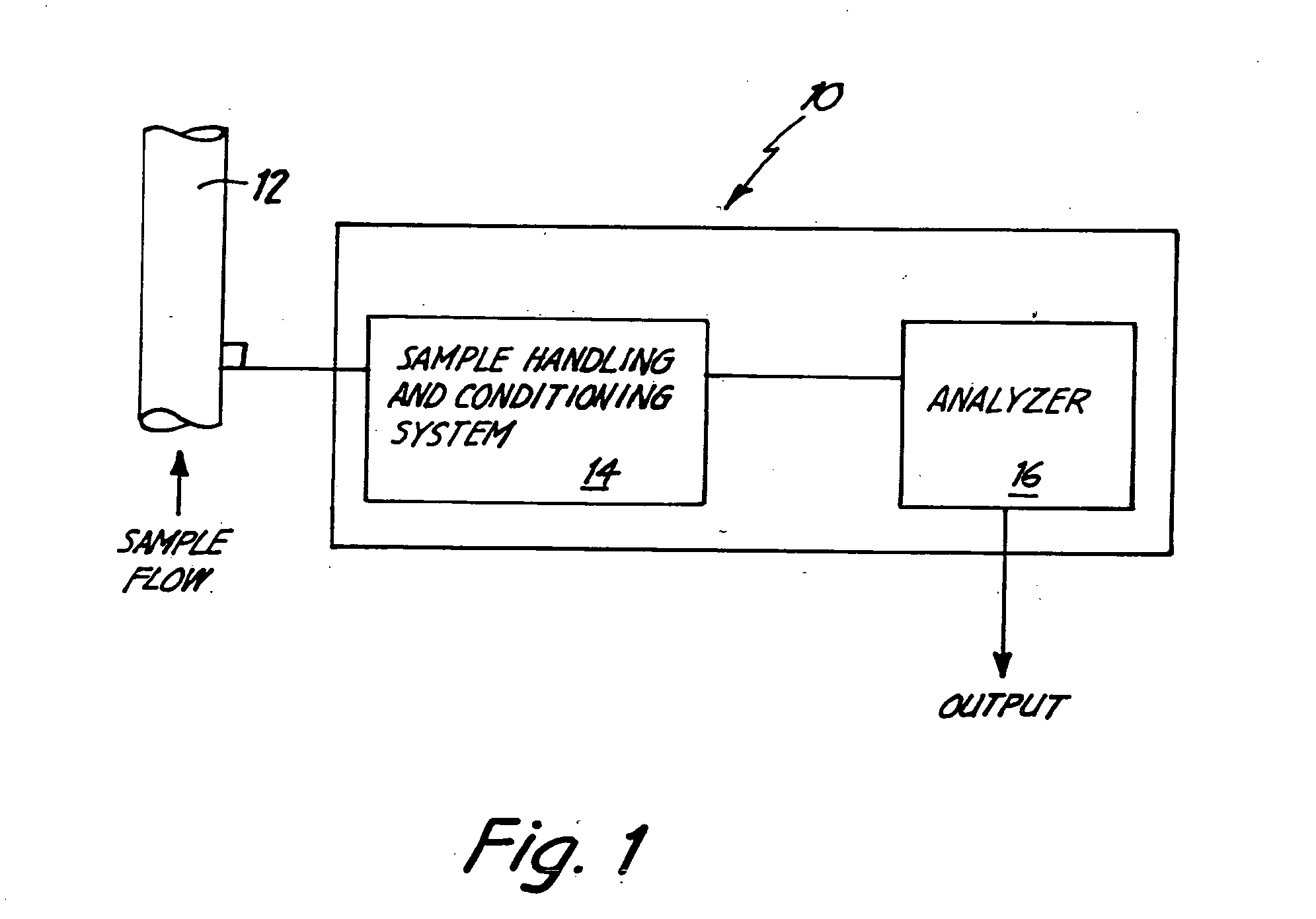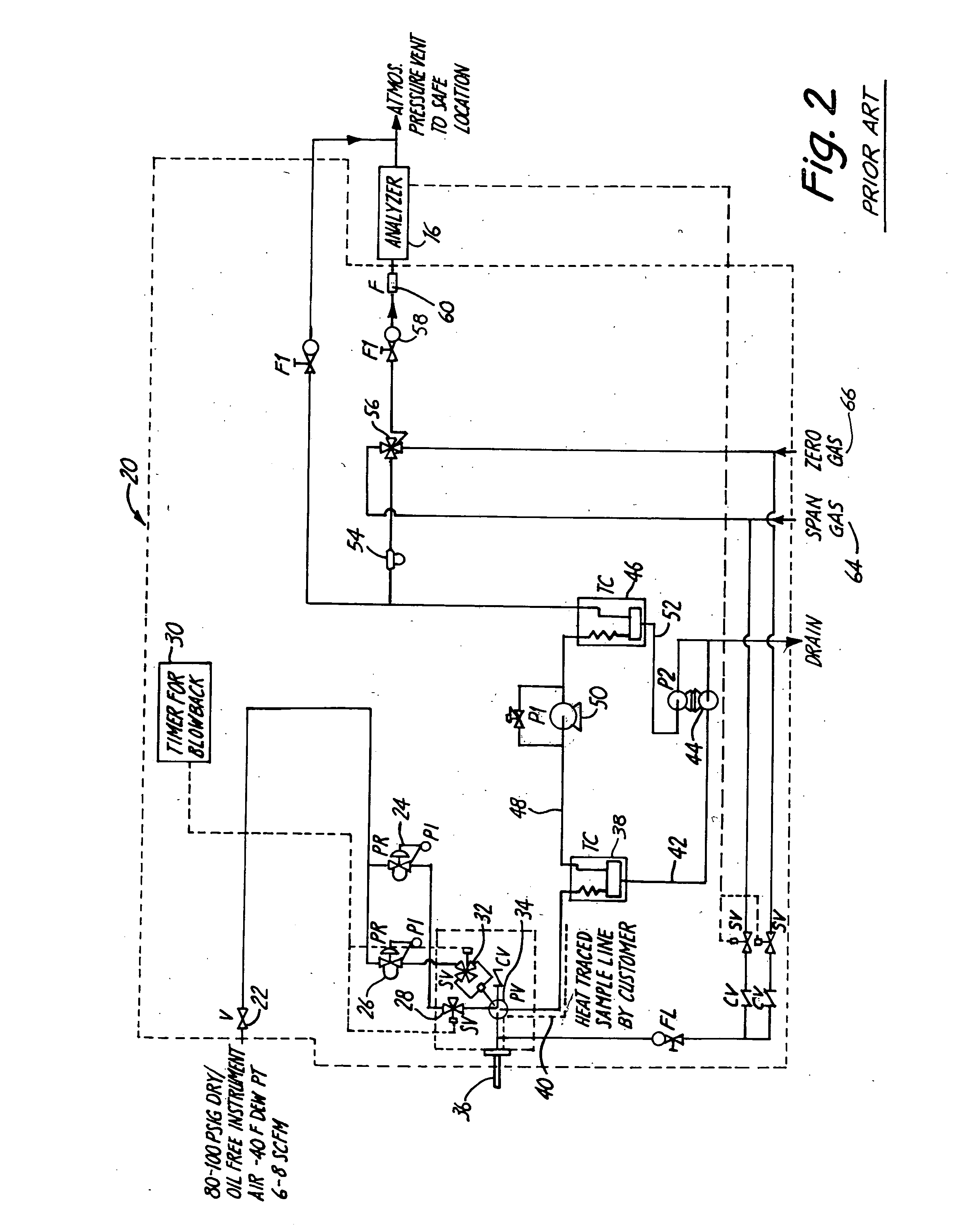Generator monitoring, control and efficiency
a technology of power generators and efficiency, applied in the direction of testing/monitoring control systems, instruments, specific gravity measurements, etc., can solve the problems of increasing, energy supply, such as electricity, not being able to keep up with the increase in demand, and being engulfed by an energy crisis, so as to achieve less time and less expensive
- Summary
- Abstract
- Description
- Claims
- Application Information
AI Technical Summary
Benefits of technology
Problems solved by technology
Method used
Image
Examples
Embodiment Construction
[0025] The following description of the preferred embodiments is organized by function. However, the organization of the description should not be considered a limitation upon the invention, since various functions can be combined or omitted as desired.
[0026] Continuous Emission Monitoring System (CEMS)
[0027]FIG. 1 illustrates a Continuous Emission Monitoring System 10 coupled to a process container such as pipe 12. System 10 periodically, or continuously, extracts samples of exhaust gas from container 12 and analyzes such gases for constituent components. Based upon the analysis of such components, information can be obtained about the combustion process itself. Once this information is known, various parameters can be adjusted or modified in order to optimize the combustion process. Generally, a Continuous Emission Monitoring System, such as system 10, includes two main components; a sample handling system and a suitable analyzer.
[0028] Sample handling system 14 is coupled to a...
PUM
 Login to View More
Login to View More Abstract
Description
Claims
Application Information
 Login to View More
Login to View More - R&D
- Intellectual Property
- Life Sciences
- Materials
- Tech Scout
- Unparalleled Data Quality
- Higher Quality Content
- 60% Fewer Hallucinations
Browse by: Latest US Patents, China's latest patents, Technical Efficacy Thesaurus, Application Domain, Technology Topic, Popular Technical Reports.
© 2025 PatSnap. All rights reserved.Legal|Privacy policy|Modern Slavery Act Transparency Statement|Sitemap|About US| Contact US: help@patsnap.com



